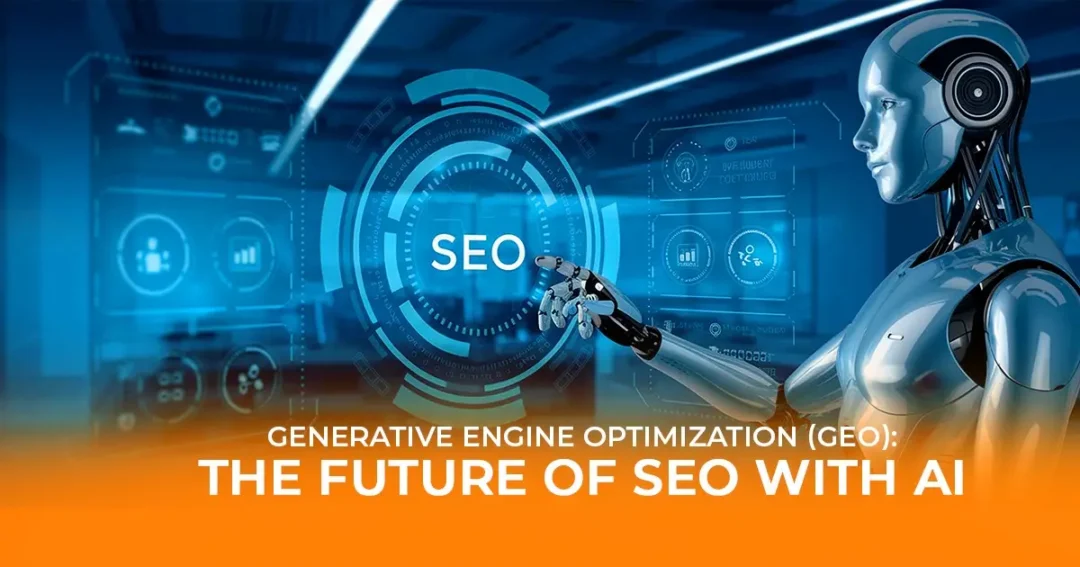In the ever-evolving world of digital marketing, staying ahead isn’t just about reacting to Google’s algorithm updates — it’s about anticipating what’s next.
And right now, what’s next is here: Generative Engine Optimization (GEO).
For performance-focused brands and marketing professionals working with agencies like DigiChefs, this new era of SEO opens massive potential. If your current strategy only targets search engine rankings, it’s time to ask: What happens when search engines become answer engines?
Welcome to the world of GEO SEO — where your content isn’t just ranked, but read, summarized, and surfaced by AI.
1. Evolution of SEO in the Age of AI
We’ve moved from keyword-stuffed pages to semantic content and then to E-E-A-T standards. Now, the game is being reshaped by AI-powered search interfaces.
Tools like ChatGPT, Google SGE (Search Generative Experience), and Bing AI don’t just display links. They generate answers, using content across the web.
For brands competing online, traditional search engine optimization remains important — but the GEO shift means content must now appeal not just to humans and bots, but also generative AI engines that decide what’s worth showing in response.
2. What is Generative Engine Optimization (GEO) in SEO?
Let’s simplify it: Generative Engine Optimization is the practice of optimizing content so AI-powered engines like ChatGPT, Perplexity, Gemini, Copilot and Google AI Overviews can understand, summarize, and cite it.
These generative engines are trained on massive datasets. They don’t crawl websites the way traditional search engines do. Instead, they pull contextual answers from multiple sources and deliver a synthesized response to users — often without ever needing to click on a link.
For brands, that means GEO is about influencing the AI’s output, not just the SERP.
So next time someone asks, “What is GEO?”, remember — it’s not just another acronym. It’s the SEO layer you need for the AI-first web.
3. Difference Between Traditional SEO and Generative SEO
Think of traditional SEO as optimizing for visibility on a page. GEO, on the other hand, is about optimizing for inclusion in AI-generated answers.
| Area | Traditional SEO | Generative SEO (GEO) |
| Goal | Rank on search engine result pages (SERP) | Be cited in AI-generated responses |
| Audience | Humans + search engine bots | Generative engines + AI models |
| Techniques | Keywords, backlinks, meta tags | Semantic structure, relevance, clarity |
| Tools | GSC, Ahrefs, Screaming Frog | ChatGPT, Jasper, Surfer, Frase |
| Output | Link clicks | Contextual answers |
So yes — GEO complements traditional SEO. You still need structured data, backlinks, and speed, but now also need AI-friendly content formats.
4. How Does Generative AI Assist in Search Engine Optimization?
AI doesn’t just change the way people search. It’s also changing the way we optimize.
Here’s how generative AI plays a critical role:
- Topic Clustering: Tools like Frase or Surfer SEO suggest clusters that AI engines recognize semantically, not just via keywords.
- Content Drafting: Platforms like Jasper or ChatGPT draft outlines, intros, and summaries that sound like human-written — and are.
- Meta & Schema Writing: Generative AI quickly creates schema markups or metadata optimized for engine search optimization.
- Answer Optimization: Long-form FAQs, conversational content, and structured snippets are more likely to be picked up in geo search results.
By incorporating AI, SEO teams are now building faster, optimizing smarter, and targeting AI visibility alongside Google rankings.
5. Benefits of Adopting GEO for Businesses
Whether you’re a high-growth startup or a seasoned enterprise, GEO offers unique advantages:
- Visibility in AI Responses: Instead of just ranking, your content is now referenced in AI tools like ChatGPT or Gemini.
- Speed + Scale: Content production is faster without sacrificing quality.
- Future-Proofing: As SGE becomes the norm, you’re already optimized.
- Higher Authority: Brands cited by AI are seen as more credible.
- Personalization: GEO adapts to specific user intents, platforms, and search behaviors.
At DigiChefs, we’re already integrating generative engine optimization into content roadmaps — helping our clients dominate both search engines and AI engines.
6. Tools and Technologies Powering GEO SEO
To build a winning GEO strategy, here are the tools we recommend:
- ChatGPT (OpenAI) – For idea generation, content outlines, and summaries
- Frase.io – For optimizing FAQs and context-rich answers
- Surfer SEO – For on-page SEO that aligns with both search bots and AI
- Jasper AI – For fast, conversion-friendly content writing
- Google SGE Insights – For understanding how your content might be surfaced in generative search results
The combination of traditional SEO tools and generative tools is what defines a solid geo digital marketing strategy today.
Final Thoughts on GEO’s Role in Future-Proofing SEO
As AI continues to redefine how search works, generative engine optimization will be the differentiator between brands that get surfaced… and brands that stay buried.
At DigiChefs, we see GEO as not just a trend, but a critical evolution of our performance-driven digital approach. Our clients aren’t just getting ranked — they’re being referenced, summarized, and trusted by the very engines shaping the future of search.
Your content deserves to be seen — even by AI. Let’s optimize for tomorrow, today!


